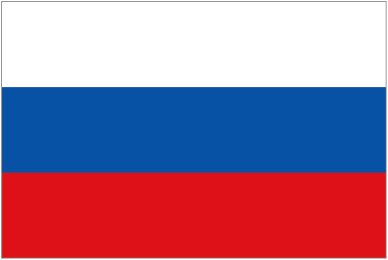

22 Peace Monuments With "Pax"
Click here for Pax Christi.Right click image to enlarge.

167 BCE - Temple of Concord, Forum Romanum, Rome (Italy). "Dedicated to the Roman goddess Concordia. Destroyed & restored multiple times." /// "In ancient Roman religion, Concordia is the goddess who embodies agreement in marriage & society. Her Greek equivalent is usually regarded as Harmonia, with musical harmony a metaphor for an ideal of social concord or entente in the political discourse of the Republican era. She was thus often associated with Pax ("Peace") in representing a stable society. As such, she is more closely related to the Greek concept of homonoia (likemindedness), which was also represented by a goddess."
28 BCE - Pax: Roman Goddess of Peace Medallion (Asia Minor, now Turkey). 1 of 40 monuments in "Peace Symbols" by Zonia Baber (1948), pp. 10-11. According to Baber, this is "the earliest Roman personification of peace... Produced in honor of the Emperor Augustus [63 BC - 14 AD]. Here Pax [Roman goddess of peace] holds a caduceus, emblem of peace, in her right hand; behind her a serpent (a symbol of healing in Greek & Roman art) rises from a cist or chest containing emblems of the goddess; the whole is surrounded by a laurel wreath." /// Image is from an offer on eBay for $962.50: "AUGUSTUS 28BC Ephesus Mint PAX Cista Mystica LARGE Ancient Silver Roman Coin RARE."
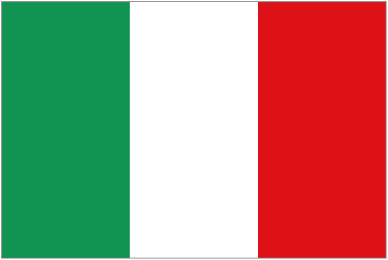

About 20 BC - Augusto di Prima Porta / Augustus of Prima Porta, Braccio Nuovo of the Vatican Museums (Vatican City). A 2.04m high marble statue of Augustus Caesar [63 BC - 14 AD] which was discovered on April 20, 1863, in the Villa of Livia at Prima Porta, near Rome (Italy). (Augustus Caesar's wife, Livia Drusilla [58 BC-AD 29], retired to the villa after his death.) "The statue's iconography is frequently compared to that of the carmen saeculare by Horace, and commemorates Augustus's establishment of the Pax Romana. The breastplate is carved in relief with numerous small figures depicting the return of the Roman legionary standards or vexillae lost to Parthia by Mark Anthony in the 40's BC and by Crassus in 53 BC, thanks to the diplomacy of Augustus."
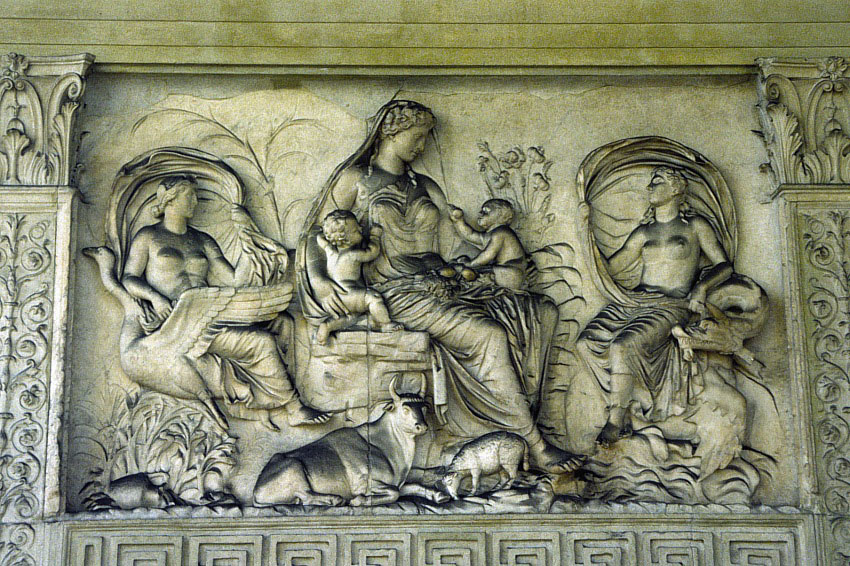



January 30, 9 BCE - Ara Pacis Augustae / Altar of Augustan Peace, Rome (Italy). Built by Roman emperor Augustus Caesar [63 BC - 14 AD]. Enclosed in 2006 by new building designed by American architect Richard Meier (seen in right image). 1 of 40 monuments in "Peace Symbols" by Zonia Baber (1948), pp. 12-13. /// "Symbol of Pax Romana."
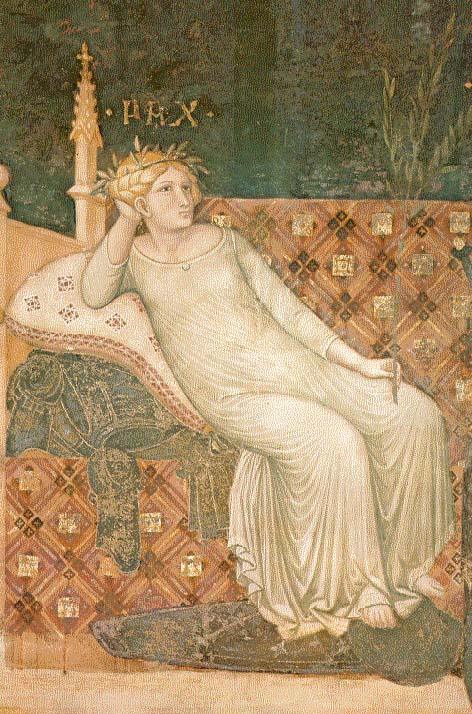


1338-39 - Pax, Sala della Pace / Peace Hall, Palazzo Pubblico (town hall), Siena, Tuscany (Italy). Part of the fresco entitled "Effects of Good Government in the City & Countryside" by Ambrogio Lorenzetti [c1290-1348].
"The Glorious Art of Peace: From the Iliad to Iraq" by John Gittings (2012), Oxford University Press.

Date? - La Giustizia e la pace si baciano / Justice & Peace Shall Kiss, Pinacoteca Tosio Martinengo, Palazzo Tosio, Brescia (Italy). Depicts a biblical scene, referring to King James, Psalm 85: "Kindness and truth will meet, justice and truth shall kiss." What date, and who is the artist?


1629-30 - "Allegory on the blessings of peace", National Gallery, London (England). By Peter Paul Rubens [1577-1640]. Oil on canvas, 203.5 x 298 cm (80 1/8 x 117 1/4 in). Also called "Peace & War" and "Minerva protects Pax from Mars."

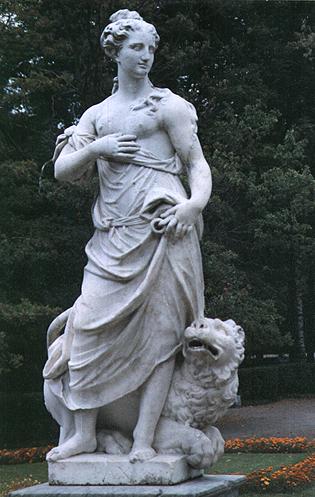

Circa 1735 - Statue of Pax, Garden of Pavlovsk Palace, St. Petersburg (Russia). By P. Baratta, "a master of the Venetian school." The palace contains "the Hall of Peace, decorated by Brenna, [which] repeats the layout and general architectural forms of the Hall of War, but is the latter's exact opposite in the motifs of its decor. It is ornamented with emblems of the arts, farming implements, sheaves of grain, basketfuls of flowers or fruit, musical instruments, clusters of grapes, cornucopias, etc.; in other words, attributes typical of the eighteenth-century cult of nature and idealization of rural life, and associated with the idea of peace."
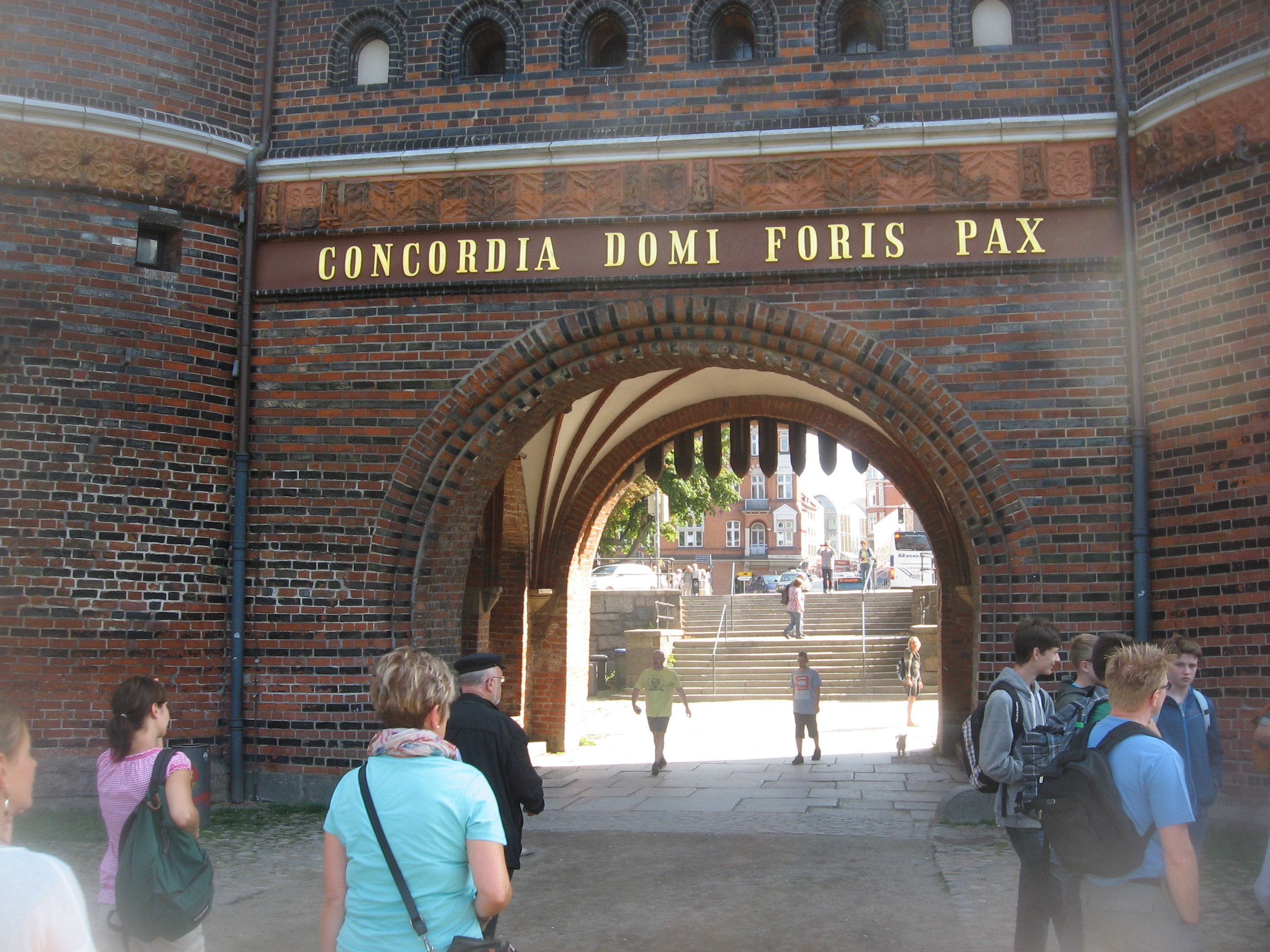
1871 - Holstentor / Holsten Gate, Holstentorplatz, Lübeck (Germany). Inscribed "concordia domi foris pax / harmony within, peace without." "This inscription is from 1871 and is a shortened form of the text which had previously been on the (not preserved) foregate: "Concordia domi et pax foris sane res est omnium pulcherrima. / Harmony within and peace without are indeed the greatest good of all." /// "Means literally "harmony at home, peace outside", and is more loosely translated at Wikipedia as "harmony within, peace without", making it so that domi means 'within the gates' and foris means 'without the gates.' The phrase uses a device called "chiasm," which uses one word order for the first half, and reverses it in the second. This puts concordia (harmony) and pax (peace), which are practically synonyms, as the first and last words, and puts domi (within) and foris (without) right next to each other. To preserve this in English, it would be 'harmony within; without, peace.' It is, of course, important to put a comma after "without" or use a different word altogether to prevent it from meaning "not having". Without chiasm, it would either be concordia domi pax foris or domi concilia foris pax." /// "The Holstentor is one of the most favourite buildings in Germany. The late gothic gate is at this time part of a fortification. In 1478 the main gate was finished." /// Both images by EWL 5 Sept 2013.



1910 - PAX / Peace Monument, Zaragosa (Spain). Honors Basilio Paraíso Lasús [1849-1930] who led Exposición Hispano-Francesa / Spanish-French Exposition in 1908. Has the city's lion & two naked charibs on top & bas reliefs of peaceful scenes on the sides.
Date? - "PAX" (le calvaire et la tour du parc de la paix), Boissy-la-Rivière, Département de l'Essonne, Île-de-France (France). Au lieu-dit "Le camp de la paix."

Date? - Poster (France). l'Emprunt de la Paix / the Peace Bond. Filled with symbols of peace & prosperity, including a breast feeding mother & many belching smokestacks.

1920 - Poster (France). Emprunt de la Paix, PAX / Peace Bond, PAX. Another mother & infant, this time with a farmer.

Date? - PAX monument of Kraainem (Belgium). "Dedicated to victims of the 1st & 2nd World Wars."
![]()
Date? - Pax Trivnphvs (pax et triumphus) Malaga (Spain). "Paco Hildago."

Date? - The Latin word "pax", peace, on the facade of a mausoleum in Ohlsdorf cemetery, Hamburg (Germany).


Year? - La croix de la Paix / Cross of Peace, Col du Wettstein, Orbey, Haut-Rhin, Alsace region (France). The cross is labeled PAX / Peace. In a World War I military cemetery.

July 19, 1919 - Pax Memorial, Walmer Golf Course, 10th Avenue, Port Elizabeth (South Africa). "Six metre cement obelisk Celebrates the outbreak of peace. Inscribed with the Word PAX (Peace) & the date 1918. Unveiled at a lavish bonfire & celebration. [But] over time the monument became forgotten & merged with the trees & undergrowth. Renewed interest in 1982 did not result in the memorial being moved, & once again it disappeared into obscurity. Today it is probably only ever seen by golfers playing their obligatory 9 holes."
Date? - Pax, National Assembly, Paris (France). Dedicated to Aristide Briand [1862-1932], several times prime minister of France, who received the 1926 Nobel Peace Prize together with Gustav Stresemann of Germany for the Locarno Treaties. (Austen Chamberlain of the UK had won a share of the Peace Prize a year earlier for the same agreement.) A 1927 proposal by Briand and US Secretary of State Frank B. Kellogg for a universal pact outlawing war led the following year to the Pact of Paris, aka the Kellogg-Briand Pact."
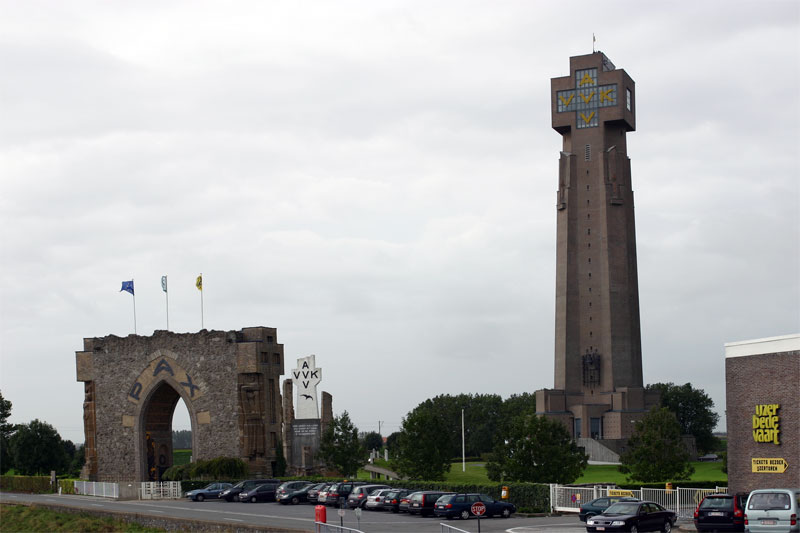

M
U
S
E
U
M1930 - IJzertoren Museum of War, Peace & Flemish Emancipation, IJzerdijk 49, Diksmuide / Dixmude, Flanders (Belgium). IJzertoren / Yser Tower is is named after the Yser River which formed the frontline during most of World War I. Inscribed "PAX" over the arch. The 84-meter tower was illegally demolished the night of March 15-16, 1946. Perpetrators were never caught but were thought to involve Belgian military & former resistance fighters in an atmosphere of post WW-II repression. 1 of 40 monuments in "Peace Symbols" by Zonia Baber (1948), pp. 38-39. Site of 4th International Conference of the International Network of Museums for Peace (INMP). Images show the rebuilt tower. Right image is brochure for the INMP conference in 2003.

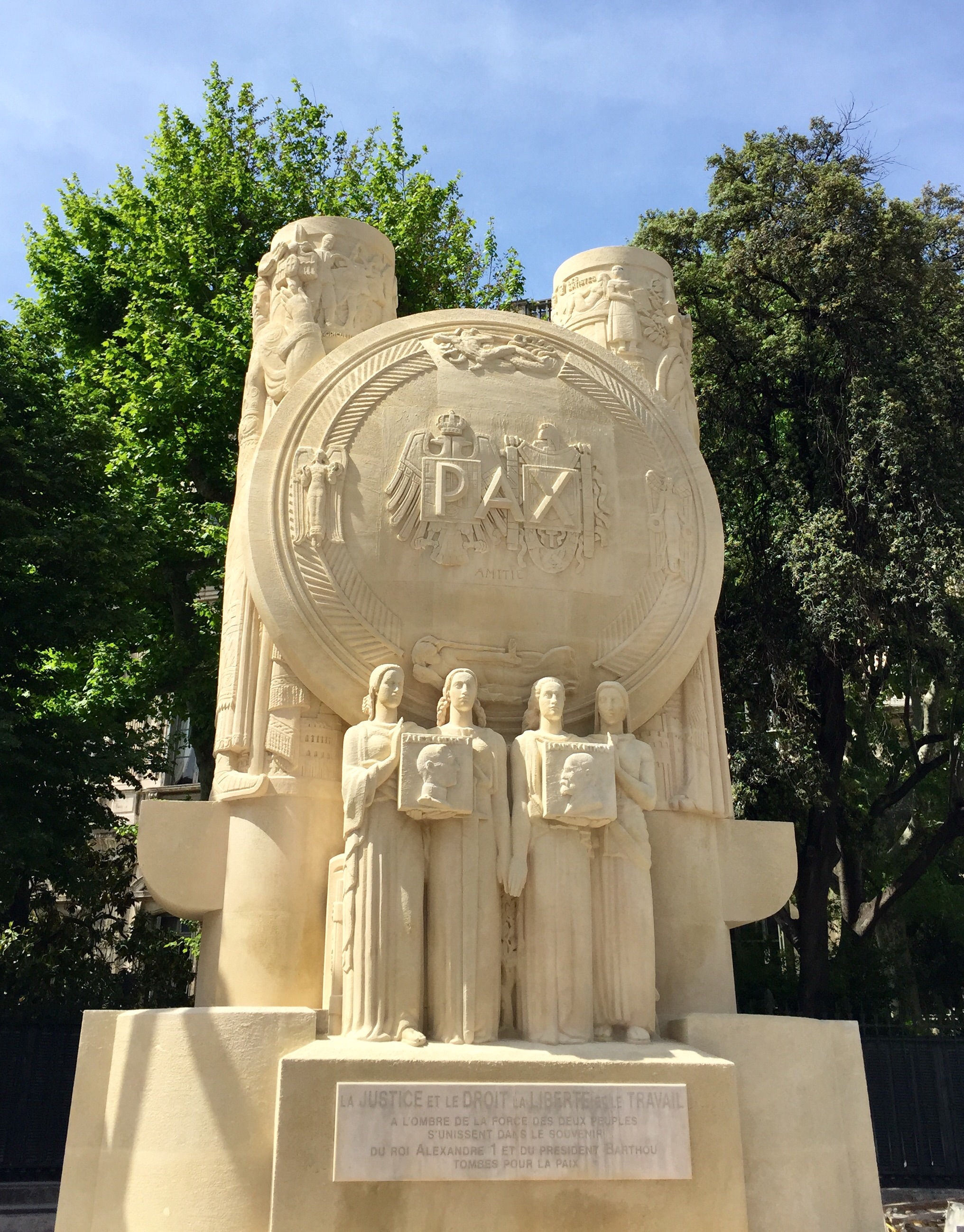

1938 - Monument à la Paix, Rue de Rome, Marseille (France). "Statues féminines aux yeux bandés, tenant les portraits des victimes... Erigé en 1938 en mémoire de l'attentat du 9 octobre 1934 à Marseille qui coûte la vie au ministre des Affaires étrangères Louis Barthou [1862-1934] et au roi Alexandre 1er de Yougoslavie [1888-1934]." /// Inscription: "PAX -- La JUSTICE et le DROIT la LIBERTE et le TRAVAIL a l'ombre de la force des deux peuples s'unissent dans le souvenir du Roi Alexandre 1 et du President Barthou tombé pour la paix." 1938 YUGOSLAVIA

June 21, 1941 - Monument à la Paix, Marseilles (France). Antoine Sartorio Louis Botinelly & Élie-Jean Vézien sculpteurs. "Aux victimes de l'attentat du 9 octobre 1934 à Marseille qui coûte la vie au ministre des Affaires étrangères Louis Barthou (1862-1934) et au roi Alexandre 1er de Yougoslavie (1888-1934)." -- WHICH DATE IS CORRECT -- 1938 OR 1941?
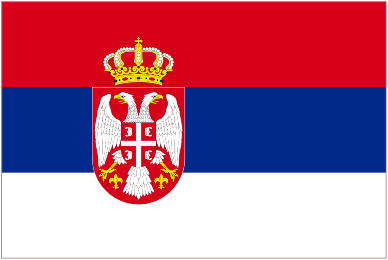

Date? - Hedge spelling "PAX," lawn of Basilica di San Francesco d'Assisi, Assisi (Italy). Mother church of the Roman Catholic Order of Friars Minor, commonly known as the Franciscan Order, in Assisi (Italy). Birthplace & burial place of St. Francis of Assisi [1181-1226]. One of the most important places of Christian pilgrimage in Italy.
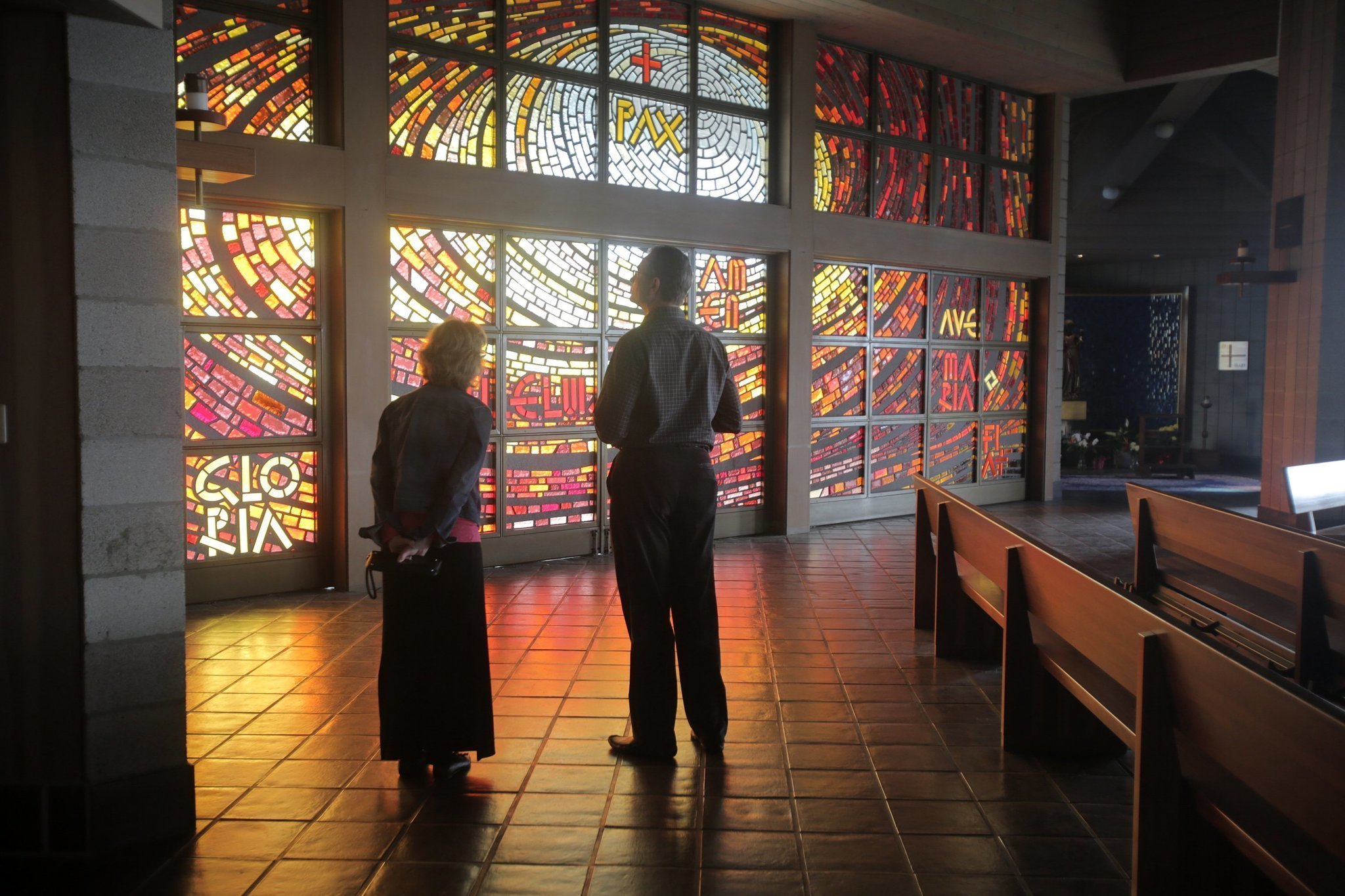
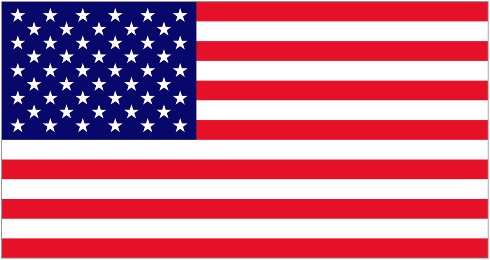
About 1985 - Gloria Window, Prince of Peace Abbey, Oceanside, California (USA). Benedictine abbey near San Diego. Central word on the window is "PAX."

September 21, 1997 - Pax-Stien / "Pax" (Peace Memorial), near Lindesnes, Vest-Agder (Norway). At southernmost point of the Norwegian mainland. "On 21st October 1942, M/S Palatea, a German ship carrying prisoners of war, was torpedoed off Lindesnes lighthouse. 915 Russian prisoners & 71 Germans perished." /// "Unveiled by King Harald V of Norway, the memorial monument was designed by sculptor Arne Vinje Gunnerud [1930-2007]. It consists of a Common Buzzard in bronze with unfolded wings, on a platform of natural rock. A 986-strong choir, one singer for every life lost on the ship, sang at the unveiling of the monument." /// "The statue is of 'Russian bird' of the kind woodcut by so many russian prisoners-of-war during the war [sic]." /// This is "Monday's Monument" #56.
